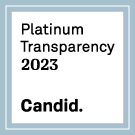A new class of treatments called CAR-T therapy is providing options for patients who have all but lost hope in their fight against cancer. This form of immunotherapy is based on genetically enhancing a patient’s own immune cells to target and kill their cancer. The Food and Drug Administration approved Yescarta for adults with a form of blood cancer called non-Hodgkins lymphoma.
Damon Runyon News
The National Academy of Medicine announced the election of 80 new members. Election to the Academy is considered one of the highest honors in the fields of health and medicine and recognizes individuals who have demonstrated outstanding professional achievement and commitment to service. Damon Runyon congratulates the four alumni who were elected this year:
Scott A. Armstrong, MD, PhD (Clinical Investigator ’03-’08), Dana-Farber Cancer Institute
The National Institutes of Health’s High-Risk, High-Reward Research program, funded 86 awards to exceptionally creative scientists proposing to use highly innovative approaches to tackle major challenges in biomedical research. The program is designed to accelerate scientific discovery by supporting high-risk research proposals. Applicants of the program are encouraged to think outside-the-box and to pursue exciting, trailblazing ideas.
Gordon J. Freeman, PhD (Damon Runyon Fellow ’79-’81), Dana-Farber Cancer Institute, Boston, is one of five scientists honored by the 2017 Warren Alpert Foundation Prize for discoveries focused on “Immune Checkpoint Blockade and the Transformation of Cancer Therapy.” Collectively, their work has elucidated foundational mechanisms in cancer’s ability to evade immune recognition through the CTLA-4 and PD-1 pathways and, in doing so, has profoundly altered the understanding of disease development and treatment.
Liron Bar-Peled, PhD (Damon Runyon Fellow ‘14-‘17) of the Scripps Research Institute, La Jolla, developed a new proteomics-based approach to discover small-molecule inhibitors that could be used as anti-cancer therapies. The approach is based on the fact that certain amino acids on proteins have a special chemical reactivity that allows them to form irreversible covalent bonds with suitably designed probe or "scout" molecules.
Alexandra Zidovska, PhD (Damon Runyon Fellow ‘10-‘12) of New York University, New York, has discovered the “internal clock” of live human cells using state-of-the-art fluorescence microscopy. Previously, the only way to tell the precise point of a cell in its life cycle was by studying dead cells. Alexandra’s lab has found that the nuclear envelope, which separates the nucleus with the DNA from the rest of the cell, has a previously undetected type of motion: it fluctuates in shape every few seconds.
Kristopher R. Bosse, MD (Damon Runyon Physician Scientist '16-'20) of the Children's Hospital of Philadelphia, is engineering a new drug to selectively target neuroblastoma cells and deliver a chemotherapeutic agent into the cells. Neuroblastoma is a cancer of the developing nervous system that usually occurs as a solid tumor in a child's chest or abdomen, and is the most common cancer in infants.
We recently ended our 2017 Fiscal Year. It was an exceptional year in many respects, especially as it was our 70th Anniversary. We celebrated this milestone at our annual breakfast benefit by recognizing the scientists who have gotten us to a point in time where progress in cancer research is accelerating rapidly and more new therapies are being approved for patients.
Click here to see our report on our progress over the past 70 years. It highlights Damon Runyon scientists who:
Five researchers have been announced as the recipients of the Albany Medical Center Prize in Medicine and Biomedical Research for 2017. They have made important contributions to the development of CRISPR-Cas9, a gene engineering technology that harnesses a naturally occurring bacterial immune system process. The technology has revolutionized biomedical research and provided new hope for the treatment of genetic diseases and more.
They met on the dance floor at a party thrown by postdoctoral students from each of their labs at the University of Washington and Fred Hutchinson Cancer Research Center in Seattle, and reconnected a couple months later at a genetics lecture. "And then she finally gave me her phone number!" says Steve.







